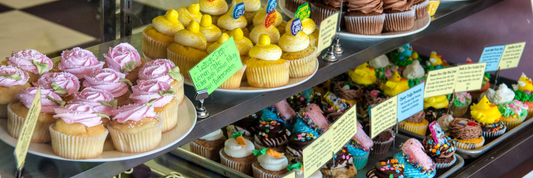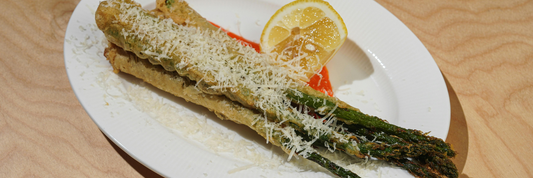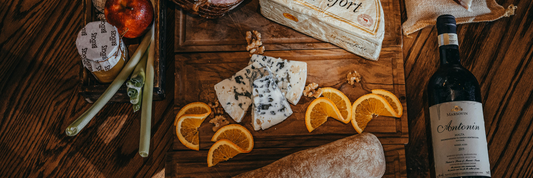A piping bag, also called a pastry bag, icing bag, or decorating bag, is an essential baking tool used to pipe frostings, creams, meringue, or even dough into precise shapes. Whether you’re decorating a cake, filling éclairs, or piping choux pastry, mastering how to use a piping bag can elevate your desserts from simple to professional.
In this comprehensive guide, you’ll learn everything about piping bags from types and materials to how to fill, use, and clean them properly. We’ll also explore the best piping bag sets, eco-friendly disposable piping bags, and professional tips for every level of baker.
-
How to Frost Cupcakes at Home: Easy Piping and Decorating Methods
-
Bakery Equipment Checklist for Startups and Small Shops
-
How to Fill Cupcakes with Jam, Cream, or Ganache the Right Way
What Is a Piping Bag?

A piping bag is a cone-shaped bag designed to hold semi-solid mixtures like buttercream, whipped cream, or batter. The mixture is squeezed through a piping tip (or nozzle) to create decorative patterns or to fill pastries.
Historically, bakers used cloth pastry bags, but modern versions come in plastic, silicone, or biodegradable materials for convenience and hygiene.
You’ll also hear people call it a pastry piping bag or cake decorating bag they all refer to the same versatile tool.
Piping Bag Anatomy
A typical piping bag includes:
-
Bag body: made of silicone, canvas, plastic, or compostable film.
-
Piping tip/nozzle: the metal or plastic part that shapes the icing flow.
-
Coupler: a two-piece connector that lets you switch tips easily.
-
Piping bag clip or tie: prevents icing from spilling out the top.
If you’re buying your first piping bag set, make sure it includes multiple tips, a coupler, and reusable bags for maximum versatility.
Types of Piping Bags

1. Reusable Piping Bag
Usually made from silicone or canvas, reusable piping bags are durable and environmentally friendly. They are ideal for professional bakers who decorate frequently.
Pros:
-
Cost-effective in the long run
-
Eco-friendly (reduces single-use plastic waste)
-
Works with all standard piping tips
Cons:
-
Requires thorough cleaning
-
Can stain or absorb strong food colors
2. Disposable Piping Bag
Disposable piping bags are made of PE (polyethylene) or biodegradable PLA. Perfect for busy kitchens or events where cleaning time is limited.
Pros:
-
Hygienic and convenient
-
No cleaning required
-
Easy to cut for tipless piping
Cons:
-
Generates more waste (unless compostable)
3. Tipless Piping Bag
These tipless disposable piping bags come with a pointed end that can be snipped to any desired size. They’re perfect for macarons, royal icing, and fine detailing.
Piping Bag Sizes

Piping bags come in different sizes to suit various baking needs:
-
8-inch: for small details and cookie decorating
-
12–14 inch: for cupcakes and medium projects
-
16–18 inch: for large cakes or batter
-
24 inch: for commercial baking
The right size ensures comfort, control, and reduces waste. For beginners, a 12-inch piping bag is the perfect start.
Piping Tips and Their Uses
Piping tips (also called nozzles) control the shape of the icing. Here are the most common types:
-
Round tips: perfect for writing, dots, and outlines
-
Open star tips: create rosettes and borders
-
Closed star tips: give deeper ridges
-
Petal tips: for flowers and ruffles
-
Leaf tips: for leaves and decorative greens
-
Basketweave tips: for textured cake surfaces
Popular brands like Wilton and Ateco use numbering systems — for example, Wilton 1M (star tip) or 104 (petal tip).
How to Assemble a Piping Bag
-
Choose your bag and tip.
-
Insert the coupler base into the bag, then slide on the piping tip.
-
Screw on the coupler ring to secure.
-
Twist the bag slightly above the tip to prevent leaks.
If you’re not using a coupler, snip the end of the bag, insert the tip halfway, and twist tightly.
How to Fill a Piping Bag Properly

-
Fold down the top of the bag to form a cuff.
-
Place it inside a tall glass for support.
-
Spoon frosting into the bag (fill only halfway).
-
Unfold, twist the top, and squeeze gently to remove air bubbles.
Pro tip: Use a piping bag clip to keep the top secure and prevent frosting overflow.
How to Hold and Use a Piping Bag
Hold the top of the piping bag with your dominant hand, and use the other hand to guide it. Keep the bag at a 45° angle for borders or 90° for dots and rosettes.
Control the pressure evenly squeeze from the top, not the middle, to avoid bursting seams.
Common Piping Bag Problems and Solutions
| Problem | Cause | Solution |
|---|---|---|
| Icing leaks from the top | Bag not twisted properly | Use a clip or tie |
| Bag bursts or splits | Overfilling | Fill only halfway |
| Air bubbles | Frosting not pressed down | Use a scraper before piping |
| Tip falls out | No coupler used | Always secure with coupler or tape |
Cleaning and Maintaining Piping Bags
For reusable piping bags, wash immediately after use:
-
Turn inside out
-
Soak in warm, soapy water
-
Use a bottle brush for corners
-
Air dry completely
Avoid using metal scrubbers that can damage silicone or cloth. Store piping tips and couplers in a dry container to prevent rust.
Best Piping Bags (2025 Buying Guide)

When shopping for a piping bag, consider:
-
Material quality: silicone, canvas, or eco plastic
-
Seam strength: prevents bursting
-
Compatibility: fits standard nozzles and couplers
-
Ease of cleaning
Top-rated piping bags:
-
Reusable Silicone Pastry Bag Set
-
Compostable Disposable Piping Bags (eco-friendly)
-
Tipless Piping Bag for Cookies and Macarons
-
Professional 16-inch Canvas Pastry Bag
For sustainability, opt for compostable piping bags or reusable silicone options to reduce waste in the kitchen.
Creative Uses of a Piping Bag
![]()
-
Fill pastries: like eclairs, cream puffs, or churros
-
Decorate cakes and cupcakes: for professional finishes
-
Pipe choux pastry or macaron batter
-
Create savory dishes: mashed potatoes, deviled eggs, or mousse plating
FAQs
1. What is a piping bag used for?
A piping bag is used to pipe frosting, cream, batter, or puree into precise shapes or fillings.
2. Can I use a Ziploc bag as a piping bag?
Yes, cut a small hole in one corner but it won’t be as durable or precise as a real piping bag.
3. How do I clean a reusable piping bag?
Wash with warm, soapy water, rinse, and dry completely. For silicone bags, you can use a dishwasher.
4. Which piping bag is best for beginners?
Start with disposable or reusable silicone piping bags with basic tips like round and star.
5. How do I prevent air bubbles in a piping bag?
Press the icing down gently, twist the bag top before squeezing, and tap it lightly to remove trapped air.
Conclusion
A piping bag is more than just a baking accessory — it’s a precision tool that helps you turn simple desserts into edible art. Whether you prefer reusable silicone piping bags for sustainability or disposable piping bags for convenience, mastering this tool is essential for any baker.
Choose quality, practice proper technique, and explore new designs because every swirl, star, or rosette begins with one perfect squeeze.
If you care about sustainability, switch to eco-friendly bags made from biodegradable or compostable materials. Brands like KimEcopak are leading the way with durable, plastic-free pastry tools that reduce kitchen waste without compromising performance.




